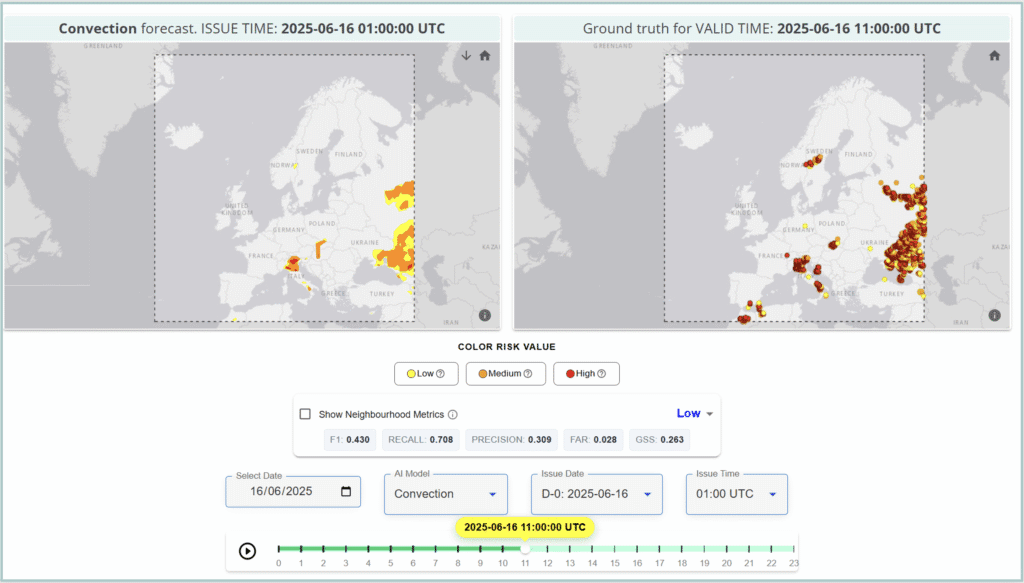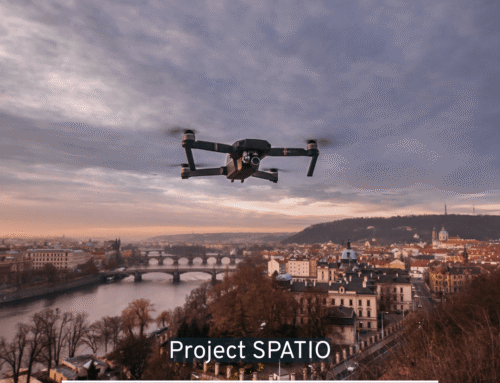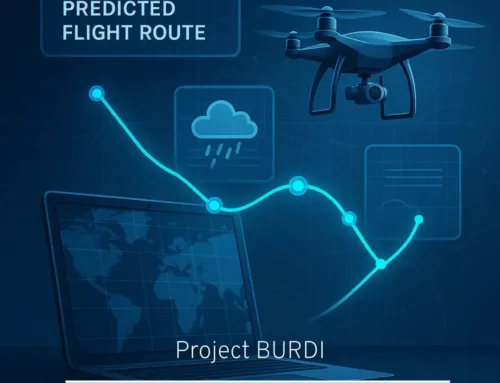Harnessing AI to Weather the Storms: Introducing Project KAIROS
From delayed departures to diverted routes, weather remains one of aviation’s most stubborn wildcards. This challenge is especially pressing for new aviation domains like drones and air taxis, where safety margins are tight and rules are still evolving.
Project KAIROS, funded under the SESAR 3 Joint Undertaking’s Fast Track Innovation and Uptake portfolio, is a European research initiative working to bring new forecasting intelligence into aviation systems. The project brings together a diverse consortium of partners — including Unisphere, AI METHODS, Meteomatics, ENAIRE, EUROCONTROL, and METSAFE — to prototype and validate AI-enhanced meteorological tools for aviation.
By combining artificial intelligence with advanced weather modelling, KAIROS aims to deliver faster, more accurate, and more targeted weather insights. These AI-powered capabilities are designed to support stakeholders across the aviation ecosystem—from airlines and ANSPs to drone operators and vertiport managers—by embedding directly into their operational decision-making tools.
KAIROS focuses on some of the most disruptive and least predictable meteorological conditions affecting aviation today:
• Convective activity, such as thunderstorms, which cause major capacity bottlenecks and are especially difficult to forecast due to their rapid development and localized impact.
• Clear-air turbulence, which cannot be detected by onboard radar but is a major contributor to in-flight injuries and flight planning challenges.
• High-altitude ice crystals, which pose serious risks to engine performance during convective events.
• Low visibility, which affects airport throughput and increasingly impacts urban air mobility.
• Sulphur dioxide and dust, which can degrade engine components and reduce aircraft operational reliability over time.

Unisphere’s Contribution
As a core partner in KAIROS, Unisphere brings two high-impact use cases from the Innovative Air Mobility (IAM) sector, aligning the project’s technical innovation with real-world operational needs.
The first use case addresses air taxi and vertiport operations, with a focus on the visibility forecast around the 5-kilometer threshold. This critical boundary influences whether flights can proceed under visual rules or must shift to instrument-based operations. Notably, this threshold is largely irrelevant to conventional aviation, which typically operates under IFR. For manned commercial aircraft, the more critical point occurs at much lower visibility—around 550 meters, where Low Visibility Operations (LVO) procedures are triggered. As a result, the 5-kilometer threshold has traditionally been overlooked in aviation weather research, making it a new and important frontier for AI-supported forecasting.
Unisphere supports this use case through a prototype integration of AI-enhanced visibility data into its NOVA software platform, a flight management system tailored for drone and air taxi operations. These insights are intended to support the decision tools used by air taxi and vertiport operators, including Unisphere’s Digital Copilot, a real-time decision-support service that helps assess weather-related risks and enable more confident, condition-aware operational planning.
The second use case targets BVLOS drone missions in tropical and equatorial regions, where convective activity is the dominant weather-related risk. In this context, Unisphere acts as a consumer and validator of nowcasting products developed within KAIROS, conducting a prototype integration into its U-space Weather Information Service (WIS). This prototype setup allows AI-enhanced weather intelligence to be evaluated in real-world drone planning and mission support scenarios—helping operators improve pre-flight risk assessment and in-flight decision-making.
By contributing these focused use cases and providing NOVA and WIS as research demonstration platforms, Unisphere ensures that the AI capabilities developed in KAIROS are validated in realistic, forward-looking operational environments that reflect the future of digital airspace.
From Research to Real-World Impact
KAIROS is now moving into its demonstration phase, where the project’s AI-based meteorological models will be tested and validated in real operational environments. This marks an exciting milestone: the opportunity to showcase and evaluate what has been developed in practice, together with end users and aviation stakeholders.
Through live demonstrations and prototype integrations, the project aims to assess not just the technical performance of AI-enhanced systems, but also their usability and operational relevance in day-to-day decision-making.
With contributions from Unisphere, AI METHODS, ENAIRE, EUROCONTROL, and METSAFE, KAIROS is well positioned to transform AI-driven weather forecasting from a research concept into a deployable capability. The result will be a more resilient, predictable, and intelligent airspace system that supports the growing diversity of aviation stakeholders in Europe and beyond.
Want to see how AI-enhanced weather forecasting can make your air operations safer and more predictable? Get in touch to explore how Unisphere’s digital platforms are helping operators turn weather intelligence into real-world decisions!





